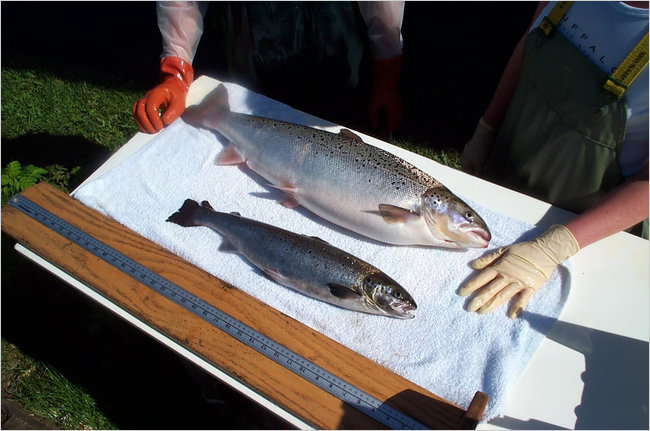 |
| Genetically engineered salmon (top) compared to natural salmon. |
A Food and Drug Administration (FDA) panel will decide Monday, September 27 whether the first genetically engineered food animal proposed for public consumption will be safe to eat and safe for the environment. The fish in question is a salmon that can grow at twice the normal rate, making the journey from inland fish farm to the table twice as fast.
The salmon’s maker, Aqua Bounty Technologies, Inc., based out of Massachusetts, has said the gene inserted has not mutated over multiple generations of fish and does not harm to the animals. Based on recent taste test, Aqua Bounty claims the fish is similar in almost every way to natural salmon and tastes the same.
Aqua Bounty Chief Executive Officer Ronald Stotish told the FDA’s panel that the fish could provide the “healthy kind of diet that Americans are used to.” Overfishing and increased demand have put a strain on many fish species in recent decades. Industrialization in the Northeast has seriously impacted the Atlantic salmon’s habitat, and most Atlantic salmon now comes from inland fish farms. Aqua Bounty has said it will sell its salmon eggs to fish farms in Canada and Panama, and eventually in the U.S., if the FDA panel grants approval.
How the public will react is not yet clear. Critics have voiced concerns over the amount of time allowed for testing the salmon, as well as concerns over how to label genetically engineered animals in supermarkets. Current FDA rules require special labels for altered food when there is a vast difference between natural and genetically modified food (most genetically engineered crops are not labeled).
Genetically engineered vegetables such as corn, rice, and peppers have been sold in markets since the early 1990’s.
Read more about the controversy surrounding genetically engineered salmon here.




